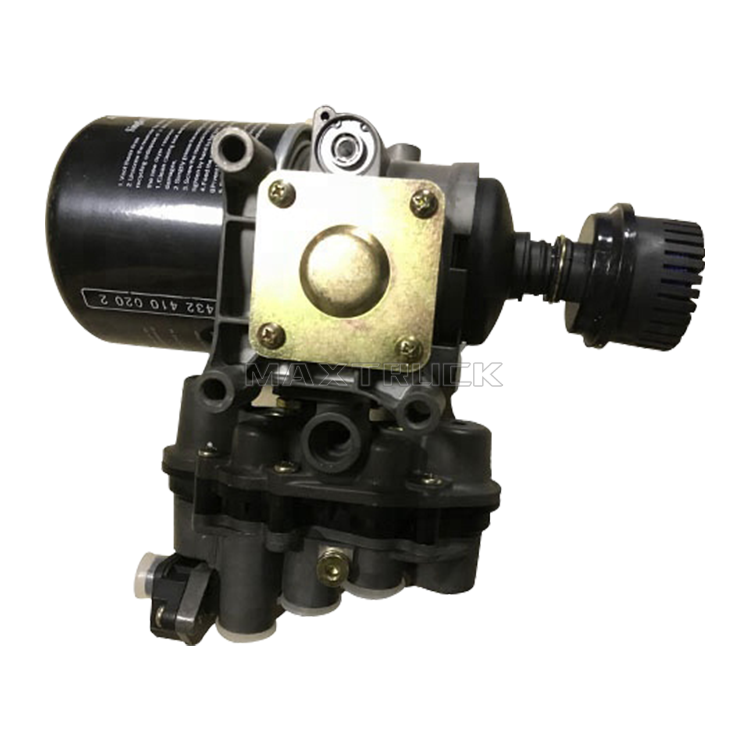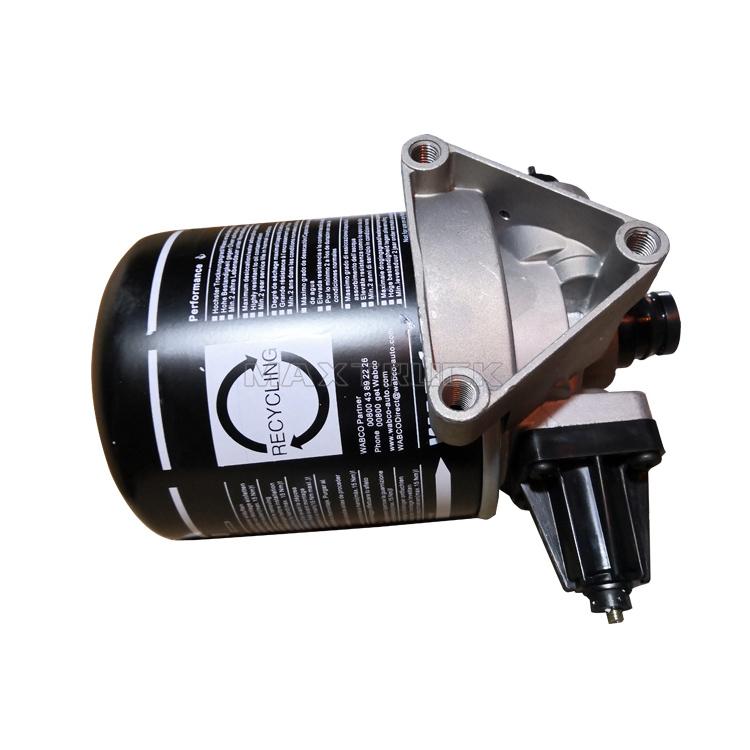Industry
How to Diagnose and Replace a Faulty Air Dryer in Your Truck
When it comes to truck maintenance, the air dryer plays a critical role in ensuring the longevity and reliability of your vehicle’s air brake system. At MAXTRUCK GROUP LIMITED (abbreviated as MAXTRUCK), we understand the importance of keeping your truck’s air system free from moisture and contaminants. This article provides a comprehensive guide on how to diagnose and replace a faulty air dryer in your truck, while also touching on the significance of air brake system and commercial vehicle maintenance in the trucking industry.
Understanding the Role of the Air Dryer
The air dryer is a vital component in any truck equipped with an air brake system. Its primary function is to remove moisture and oil vapors from the compressed air before it enters the brake lines. This prevents corrosion, freezing, and potential brake failure, which can be disastrous for commercial vehicles. At MAXTRUCK, we recommend regular inspection and maintenance of the air dryer to ensure optimal performance and safety.

Why Moisture Removal Matters
Moisture in the air brake system can lead to a range of issues, including:
- Corrosion of brake components
- Freezing of air lines in cold weather
- Reduced braking efficiency
- Increased maintenance costs
By effectively removing moisture, the air dryer ensures the reliability of the air brake system, especially in demanding commercial vehicle maintenance schedules.
Diagnosing a Faulty Air Dryer
Early diagnosis of air dryer problems can save you from costly repairs and potential downtime. Here are the most common symptoms indicating a faulty air dryer:
- Excessive Moisture in Air Tanks: If you notice water or oil in the air tanks during routine draining, it’s a clear sign that the air dryer is not functioning properly.
- Frequent Compressor Cycling: A malfunctioning air dryer can cause the air compressor to cycle more frequently as it struggles to maintain air pressure.
- Unusual Noises: Hissing, rattling, or other abnormal sounds from the air dryer unit may indicate internal damage or worn components.
- Warning Lights: Modern trucks often have dashboard indicators for air system faults. Pay attention to any warning lights related to the air brake system.
Inspection Checklist
MAXTRUCK recommends the following inspection steps:
- Check for visible leaks or damage around the air dryer unit.
- Inspect the purge valve for signs of sticking or clogging.
- Monitor air tank drainings for excessive moisture or oil.
- Listen for irregular noises during dryer operation.
Why Regular Air Dryer Maintenance Is Critical
In the world of commercial vehicle maintenance, neglecting the air dryer can have far-reaching consequences. Not only does it compromise the air brake system, but it also puts driver safety and cargo at risk. At MAXTRUCK, we emphasize the importance of preventive maintenance as part of our commitment to fleet reliability and road safety.
Industry Trends and Best Practices
The trucking industry is moving towards more automated and predictive maintenance strategies. Telematics and sensor-based monitoring systems now allow for real-time tracking of air dryer performance and air brake system health. MAXTRUCK has integrated these technologies into our service packages, helping fleet operators identify issues before they escalate.
Step-by-Step Guide to Replacing a Faulty Air Dryer
Replacing an air dryer is a straightforward process if you follow the right steps. Here’s a detailed guide from the experts at MAXTRUCK:
Tools and Materials Needed
- Replacement air dryer unit (OEM or compatible with your truck model)
- Wrenches and socket set
- Screwdrivers
- PTFE thread sealant (if required)
- Personal protective equipment (gloves, safety glasses)
Replacement Procedure
- Ensure Safety: Park the truck on a level surface, engage the parking brake, and chock the wheels. Depressurize the air system by draining the air tanks completely.
- Locate the Air Dryer: The air dryer is usually mounted near the air compressor or along the truck’s frame rail.
- Disconnect Air Lines and Electrical Connectors: Carefully label and disconnect all air lines and electrical connectors attached to the air dryer.
- Remove the Faulty Air Dryer: Use the appropriate tools to unbolt and remove the old air dryer from its mounting bracket.
- Prepare the New Air Dryer: Apply thread sealant to fittings if necessary. Ensure that the new unit matches the specifications of the old one.
- Install the New Air Dryer: Mount the new air dryer securely, then reconnect all air lines and electrical connectors according to your labels.
- Check for Leaks: Re-pressurize the air system and listen for any leaks around the connections. Tighten as needed.
- Test the System: Start the engine, allow the air system to build pressure, and observe the operation of the new air dryer. Drain the air tanks after a short run to check for moisture.
Tips from MAXTRUCK Technicians
- Always use genuine or high-quality aftermarket replacement parts for optimal performance.
- Keep a maintenance log for all air dryer replacements and inspections.
- Consider upgrading to a heated air dryer if operating in extremely cold climates.
Common Air Dryer Issues and Solutions
| Issue | Possible Cause | Recommended Action |
|---|---|---|
| Moisture in air tanks | Desiccant cartridge saturated or damaged | Replace desiccant cartridge or entire air dryer unit |
| Air leaks at dryer | Loose fittings or damaged seals | Inspect and tighten fittings, replace seals as needed |
| Purge valve not cycling | Stuck valve or electrical fault | Clean or replace purge valve, check wiring |
| Frequent compressor cycling | Check valve failure or air leak | Inspect check valve, repair leaks |
MAXTRUCK’s Commitment to Air Brake System Excellence
As a leader in commercial vehicle maintenance, MAXTRUCK GROUP LIMITED is dedicated to providing top-tier air brake system solutions. Our technicians are trained in the latest diagnostic and repair techniques, ensuring your fleet remains roadworthy and compliant with industry regulations.
Training and Support
MAXTRUCK offers specialized training programs for fleet operators and maintenance personnel, focusing on air dryer maintenance, air brake system diagnostics, and best practices for extending component life. Our customer support team is available to assist with troubleshooting and sourcing the right replacement parts for your specific truck model.

Quality Assurance
All air dryer components supplied by MAXTRUCK meet or exceed OEM standards. We partner with leading manufacturers to ensure reliability, durability, and compatibility across a wide range of commercial vehicles.
Industry Insights: The Future of Air Dryer Technology
The trucking industry is witnessing rapid advancements in air brake system technology. Modern air dryers now come equipped with integrated sensors, self-diagnosing capabilities, and extended-life desiccant cartridges. These innovations help reduce maintenance intervals and improve overall safety, aligning with MAXTRUCK’s vision of smarter, more efficient commercial vehicle maintenance.
Furthermore, regulatory bodies are imposing stricter standards for air brake system performance, making air dryer reliability more important than ever. Fleet operators who invest in regular air dryer maintenance and timely replacements not only enhance safety but also gain a competitive edge through reduced downtime and lower operating costs.
Conclusion: Prioritize Air Dryer Maintenance for Safe Trucking
Diagnosing and replacing a faulty air dryer is a crucial aspect of maintaining your truck’s air brake system. By following the steps outlined above and adhering to industry best practices, you can ensure the safety, reliability, and efficiency of your fleet. MAXTRUCK GROUP LIMITED remains committed to supporting your commercial vehicle maintenance needs with quality parts, expert advice, and industry-leading service.
Don’t overlook the importance of the air dryer in your truck’s air brake system. Schedule regular inspections, stay informed about the latest technologies, and trust MAXTRUCK for all your air system maintenance requirements. Safe and efficient trucking starts with proactive care—keep your fleet moving with confidence.
Tags:cooling system,engine

